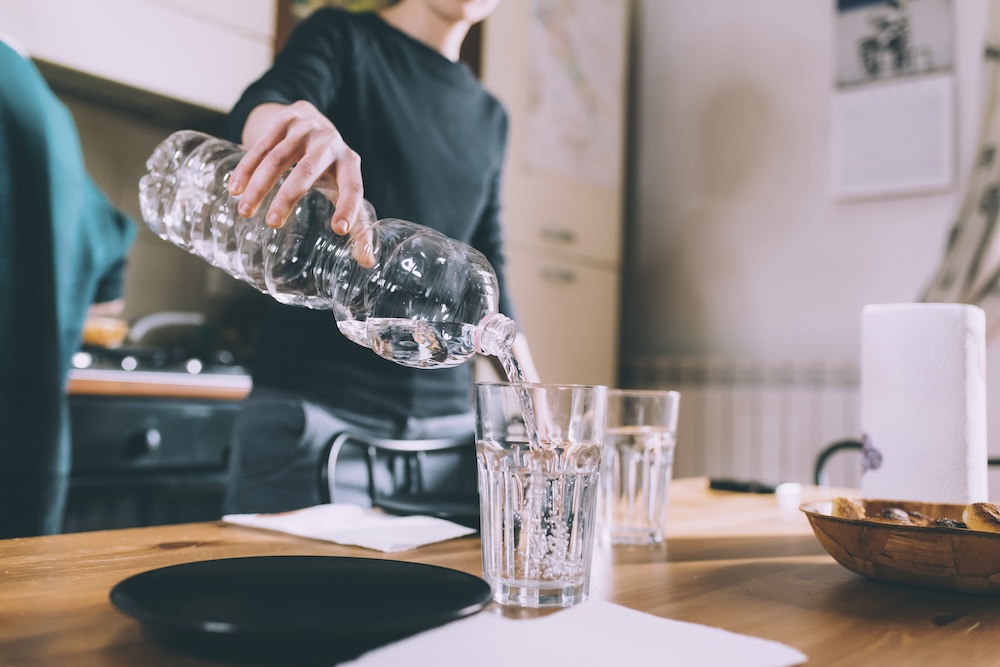What’s Really in Your Water?
When you crack open a plastic water bottle, you’re not just drinking water. You’re drinking plastic. Studies show that bottled water can contain hundreds of thousands of microplastic particles per liter. That’s right — every sip may include invisible fragments of the very bottle it came in.
So you like drinking plastic? Because that’s what single-use bottles deliver.
The Problem with Plastic Bottles
Mountains of Waste
Globally, humans buy over one million plastic bottles every minute. Less than 30% are recycled, and many end up in landfills, rivers, or oceans.
Energy and Emissions
Producing and transporting bottled water consumes vast amounts of fossil fuel. The U.S. alone uses the equivalent of 17 million barrels of oil each year to make plastic water bottles.
Recycling Myths
Even when bottles are recycled, most are downcycled into lower-quality products like carpet or clothing fibers — not new bottles. Eventually, they too become waste.
The Plastic in Your Body
Microplastics in Bottled Water
A 2023 study revealed bottled water contains an average of 240,000 microplastic particles per liter. These fragments come from the bottles themselves and the caps.
Health Concerns
While science is still catching up, early evidence links microplastics to hormone disruption, inflammation, and possible cardiovascular impacts. They’re small enough to enter the bloodstream and even cross into organs.
A Global Exposure
It’s not just bottled water. Microplastics have been found in human blood, lungs, placenta, and breast milk. But bottled water is a direct source — we’re drinking our own pollution.
Wildlife and Environmental Harm
Bottles in Oceans
Plastic bottles are consistently among the top five items collected in beach cleanups worldwide. They float, sink, or break apart, harming marine life at every stage.
Animals Mistake Them for Food
Sea birds, fish, and turtles eat plastic fragments, mistaking them for food. Once ingested, bottles cause choking, blockages, and starvation.
Long-Lasting Debris
A plastic bottle can take 450 years to degrade. Even then, it only fragments into microplastics that persist indefinitely.
Why Bottled Water Isn’t Safer
Marketing vs. Reality
Bottled water companies market their product as cleaner and safer. But in many countries, tap water is regulated more strictly than bottled water.
The Cost Myth
Bottled water can cost up to 2,000 times more per gallon than tap water. Consumers pay for packaging, transport, and branding — not superior water quality.
Real Alternatives Exist
Reusable Bottles
Stainless steel, glass, or BPA-free reusable bottles keep water safe and free of leached microplastics. They last for years with proper care.
Filtered Tap Water
For those concerned about taste or safety, affordable home filters address most quality concerns without the waste of single-use bottles.
Public Refills
Cities worldwide are investing in refill stations, encouraging people to refill instead of buying disposable bottles. This small shift saves money and waste.
Short-Lived Hydration, Long-Term Pollution
Like balloons, straws, and disposable cutlery, plastic bottles reveal a cultural contradiction: minutes of convenience create centuries of pollution. Bottled water solves no real problem but leaves a permanent trace in ecosystems and in our own bodies.
FAQs
Isn’t bottled water better for emergencies?
Yes, bottled water can be important in disaster relief. But daily reliance is unnecessary when safe tap water and reusables are available.
What about biodegradable plastic bottles?
Most so-called biodegradable bottles still break down into microplastics. They are not a long-term solution.
Are aluminum cans or cartons better?
They have their own footprints but are generally more recyclable. Still, the best option is reusables.
Is tap water really safe?
In most developed countries, yes — and it’s tested more rigorously than bottled water. Where it’s not, filtration systems provide safer, sustainable alternatives.
Final Thoughts
Single-use plastic bottles are the ultimate false promise: marketed as pure, safe, and convenient, but in reality delivering pollution, waste, and plastic straight into our bodies.
If we can’t put down the disposable bottle — an item that is both expensive and harmful — what chance do we have against bigger plastic problems?
It’s time to lose the bottle habit. Fill up a reusable one instead. Your wallet, your health, and the planet will all be better for it.









Reader Interactions